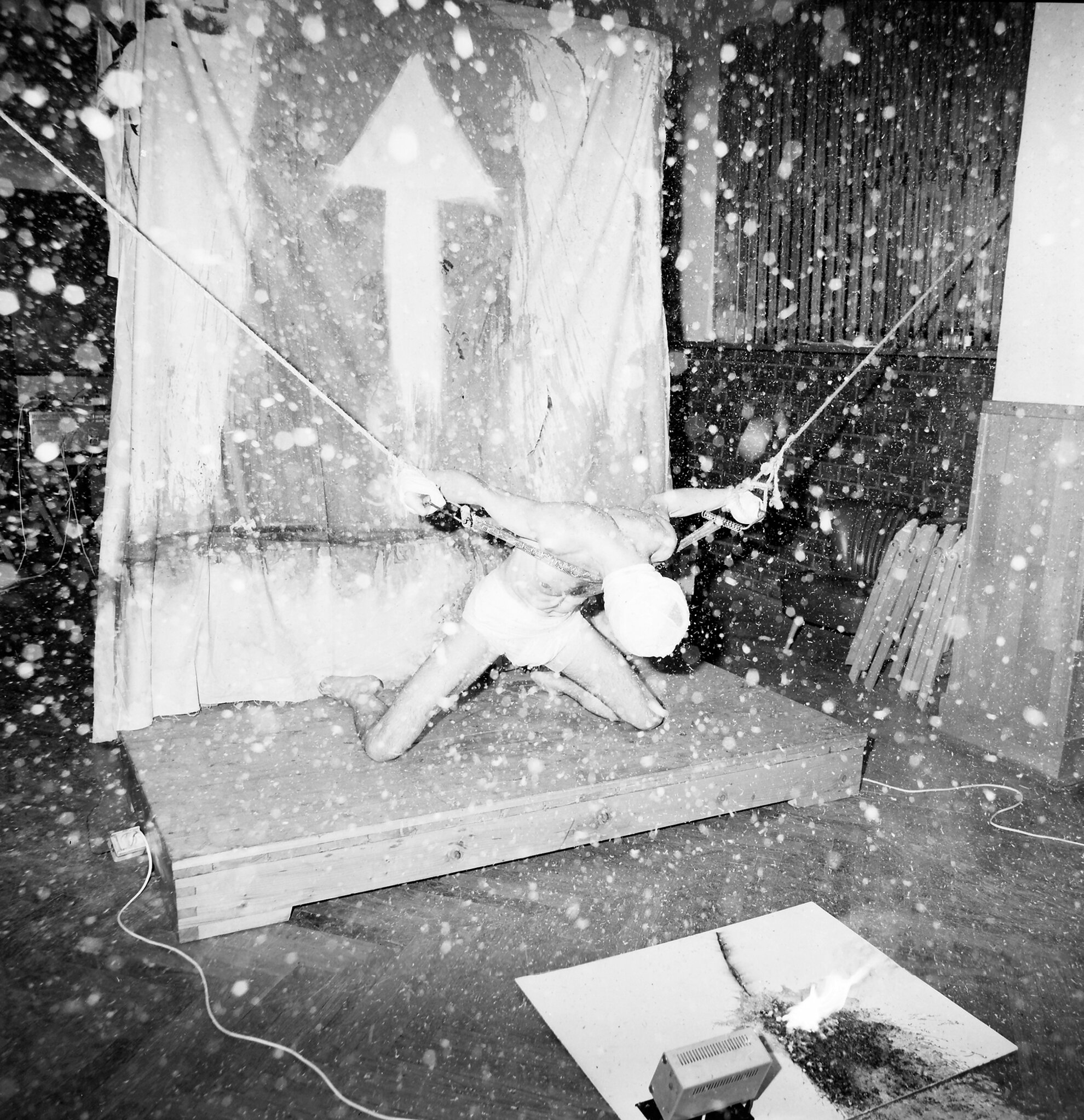A narrow hall wedged between coal-black walls is where you enter after scaling the spiral staircase within the Hopp Museum, an exhibition space dedicated to showcasing Asian arts. To the left, a landscape image first captures your attention within the current display: a photo in monochrome depicts a body splashed with paint, lying on a white sheet as a piece of flesh.

This opening image by Hajas is aptly called Flesh Painting and serves as a harbinger for the rest of the exhibition, juxtaposing ancient rituals of Tibetan Buddhism and their modern-day interpretation in his art. The traditional ceremonies of this Asian philosophy reach new spiritual heights through these works by Hajas. Photos, film stills and video installations demonstrate his art productions, filled with disturbing elements: sharp needles hurt the artist’s skin in one scene, while another shows him vomiting paint.

Hajas is known as a pioneer of Hungarian performance art, combining visuals with dramatic performance. He was inspired to practise Buddhist rituals by the Tibetan Mysteries, a 1944 book – also on view at the exhibition – by award-winning writer and philosopher Béla Hamvas. A tense series by Hajas embraces his somewhat self-abusive exercise of chö, a practice to eliminate ego of the physical being. Another project by Hajas gives insight into the processes of tummo, an intense breathing exercise to increase body heat.

And if anyone might be wondering why Hajas opted for this form of bodily brutality, a wall text in the museum provides the answer, quoting from the artist directly:
“I wanted to see in a sharper and more alarming light than is natural or permissible, the mystery about which I had read nothing. No parental or social teaching, no cultural heritage, no leisurely pursuit, no ideology or religion had ever given me any useful or perceptible information about it.”
Then, set alongside Hajas’s black-and-white creations are colourful relics related to the ancient forms of Buddhist rituals: a hand-prayer wheel, sculptures of Buddha and even a kangling, a heritage horn made of human thigh bone.

And while dark walls help reinforce the mysticism around the pieces by Hajas, items of Asian origin are featured in brightly lit halls. Derived from Tibet, Mongolia and India, this antiquated assortment is complete with themed thangkas, paintings on cotton and silk embracing deities and scenes of Buddhist belief.

Titled On the Other Side of the Intermediate State, the exhibition is a one-off event with a shorter timeframe than most temporary shows at the Hopp. Adding to its exclusivity, according to contractual obligations some images taken of Hajas by photographer János Vető will be destroyed after the exhibition ends. This alone should provide reason enough to go and see part of the Hajas legacy while it is still on view to the public.
This exhibition is not advised for visitors under 18.
Date: 6 February-14 April
Open: Tue-Sun 10am-6pm




